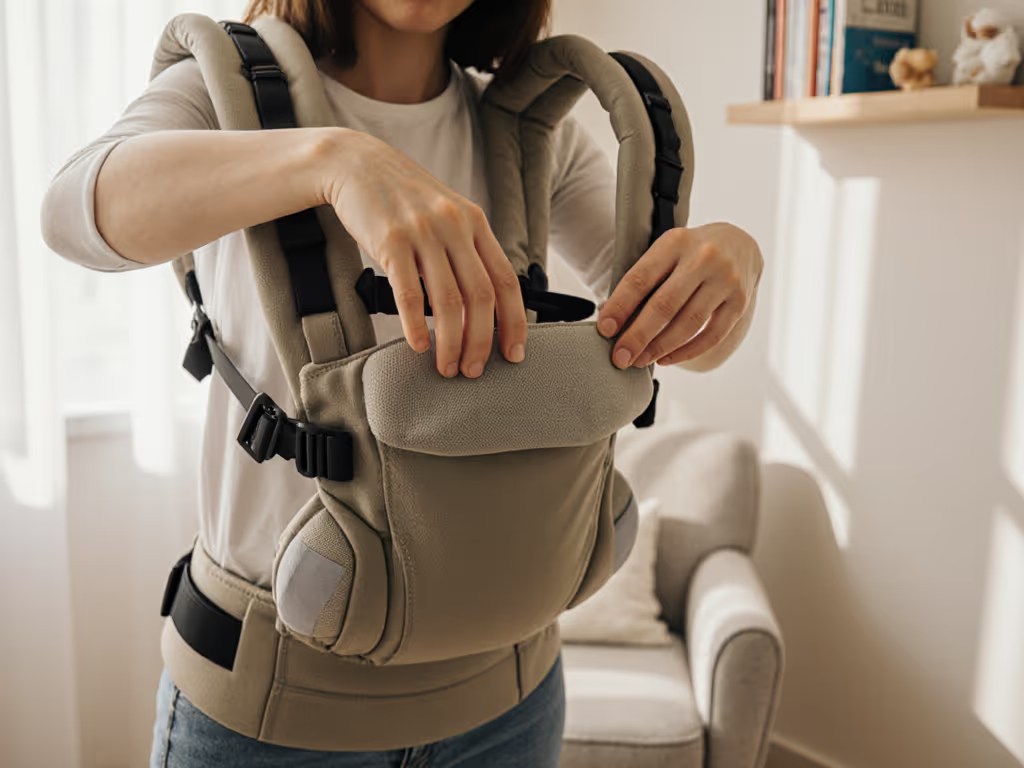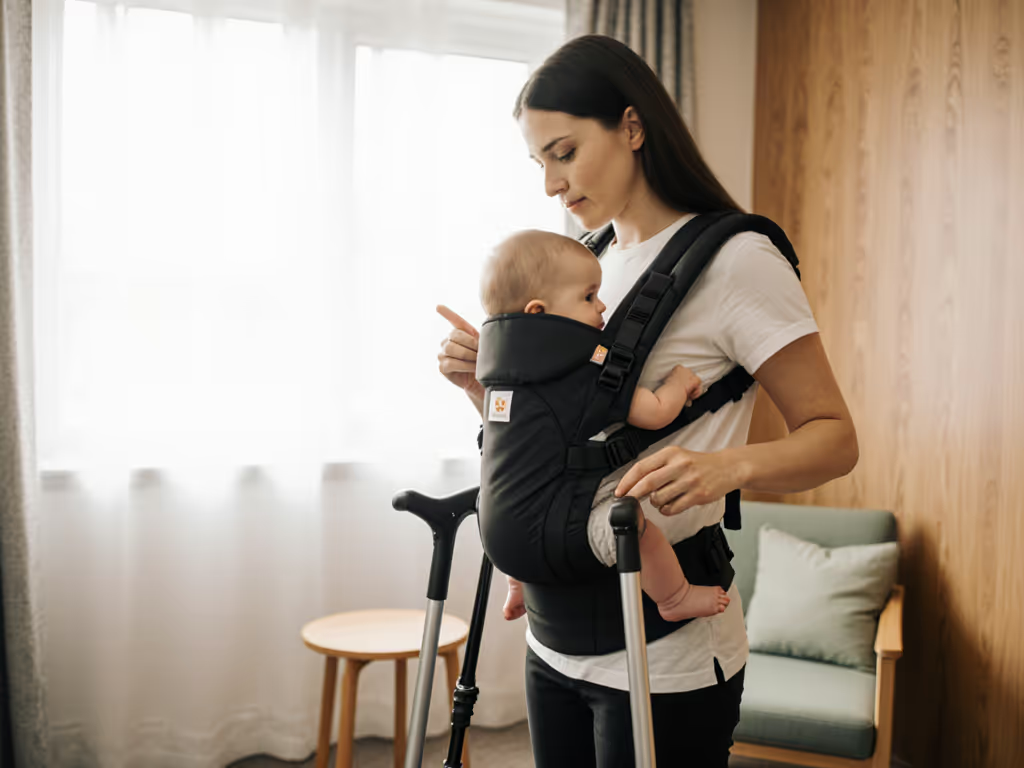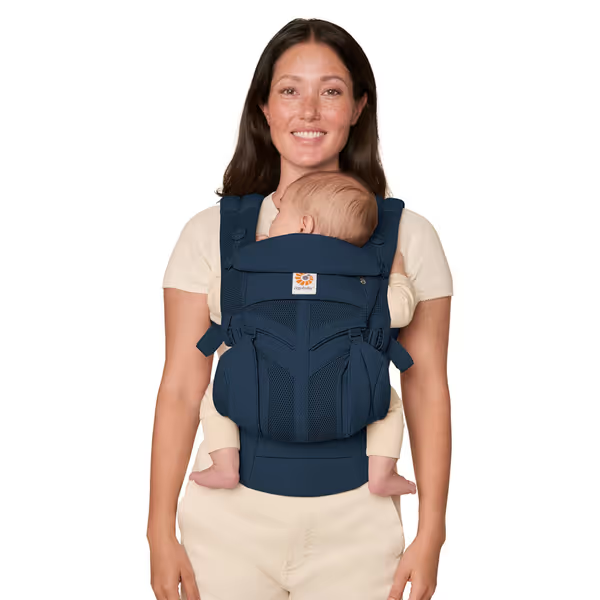
Adaptive Babywearing: Secure Hands-Free Carrier Guide

When your arms tire before your heart does, adaptive babywearing becomes essential, not just convenient. For parents navigating mobility challenges, chronic pain, or temporary injuries, disability-friendly baby carriers offer more than hands-free freedom; they provide a lifeline to connection when energy reserves run low. For medical or sensory considerations, see our special needs babywearing adaptations for carrier tweaks that prioritize comfort and safety. I've watched countless caregivers transform from hesitant to confident through small, repeatable steps that honor their unique physical realities. Whether you're managing arthritis, recovering from surgery, or parenting with one arm, this guide cuts through the noise with gentle, time-stamped steps that build competence without compromise.
What Makes Babywearing Truly Accessible?
Accessibility isn't one-size-fits-all, it's your-size, your pace, your body. True inclusive babywearing prioritizes:
- Front-access buckles that eliminate reaching behind your back
- Minimal cognitive load (3 steps or fewer for setup)
- Adjustability without contortion (single-hand waistbelt tightening)
- Clear visual references like color-coded straps or texture markers
As one wheelchair user shared with me: "A carrier that requires hip flexion beyond 90 degrees isn't an option when my legs don't bend that way." This is why checking manufacturer specs for actual range of motion requirements matters more than marketing claims. Learn how to match carrier design to your body's mechanics in our ergonomics guide.
Can I Babywear Safely With Limited Mobility?
Absolutely, but safety looks different when you're parenting with physical constraints. These safety checkpoints apply specifically to babywearing with limited mobility:
"TICK" Test: Tummy in, chin off chest, knees higher than bottom, ears visible
- Weight-bearing awareness: If you can't do a traditional "bounce test" to check seat security, practice the "one-finger lift" (gently lift baby's bottom through the fabric). If you feel significant movement, tighten the seat.
- Alternative positioning: Need to keep baby higher due to wheelchair seating? The "cuddle carry" (baby's chest against yours, knees tucked under) often works better than traditional hip carries.
- Emergency release: Always keep one hand free to release buckles. Front-access carriers eliminate the dangerous reach behind your back during sudden spills or medical episodes. Review the full TICKS safety checklist before your first wear.

Ergobaby Omni Classic All-Position 360
How Do I Find Carriers That Work With My Specific Limitations?
Start with your non-negotiables, not the product features:
For Shoulder/Arm Limitations (Arthritis, Amputation, Carpal Tunnel)
- Look for "head-hoist" carriers (pouch slings or pre-tied ringslings) that go on without arm elevation
- Test buckles with your weak hand, because many "front-access" carriers still require thumb dexterity
- Consider hybrid carriers that combine wrap security with buckle convenience
For Core/Back Challenges (Postpartum, Spinal Conditions)
- Prioritize lumbar-supported waistbands that distribute weight across hips rather than on spine
- Try carriers with chest straps that buckle low (below sternum) to avoid ribcage pressure
- Avoid narrow straps, they concentrate pressure on sensitive areas
For Lower Body Mobility (Wheelchair Users, Leg Injuries)
- Hip carries often work better than front carries when seated
- Look for shorter torso carriers to prevent baby's legs from hanging too low
- Practice the "lap transfer": secure baby in carrier while seated, then use transfer techniques you already know
Remember that foggy 2 a.m. when everything felt impossible? That's when setup time matters most. When nerves fray, you need baby carriers for disabled parents that work while you're functioning at 40% capacity, not 100%.
What's the Quickest Setup Method Under Stress?
Based on timed practice sessions with caregivers managing chronic pain, here's what works:

| Method | Avg. Setup Time | Best For |
|---|---|---|
| Clip Carrier | 0:55 seconds | One-handed caregivers, wheelchair users |
| Hybrid Wrap | 1:05 seconds | Limited shoulder mobility, partial arm use |
| Knot Wrap | 1:40 seconds | Full upper body function |
Gentle time-stamped steps for clip carrier success:
- Anchor waistbelt (20 seconds)
- Position baby in carrier while seated (15 seconds)
- Thread shoulder straps over head (10 seconds)
- Click chest clip with weak hand (10 seconds)
The key isn't speed, it's consistency. Slow is smooth; smooth becomes fast. When you practice these sequences during calm moments, your muscle memory kicks in during chaotic ones. If things still feel off, use our troubleshooting guide to diagnose common fit and safety issues.
"But My Body Doesn't Fit Standard Carriers!"
This is where accessible babywearing gets personal. For tailored fit guidance, explore our plus-size carrier fit test. One parent with cerebral palsy told me: "I thought I'd never wear my baby until I tried a carrier with magnetic snaps (no finger strength required)."
Try these adjustments:
- For larger torsos: Add bias tape loops to extend waistbelt reach
- For shorter arms: Use carabiners to pre-connect straps to waistbelt
- For sensory sensitivities: Swap standard buckles for silicone-grip alternatives

LÍLLÉbaby Complete All Seasons Baby Carrier
Where Can I Get Hands-On Help?
You don't need to figure this out alone:
- Through the Looking Glass offers free adaptive equipment consultations
- Adaptive Parent Project provides virtual babywearing support
- Many local babywearing groups now include disability-specific sessions
Most importantly: practice when you're not stressed. Set a timer for 5 minutes each morning to practice your sequence. Note where you hesitate; those are your adaptation opportunities. Build your skills when you have breathing room, not when baby's screaming and the diaper's leaking.
Next Steps: Build Your Confidence Blueprint
Start tomorrow with this actionable plan:
- Identify your biggest friction point (e.g., "I can't reach back clips")
- Spend 3 minutes exploring one solution (search "baby carriers with front-access buckles")
- Practice once during a calm moment (no baby needed)
Consistent micro-practices build competence faster than occasional marathon sessions. You're not failing at babywearing; you're learning a new physical language. And like any language, fluency comes through repetition, not perfection.
Remember: adaptive babywearing isn't about finding the "perfect" carrier. It's about finding the carrier that works with you today, honors your body's wisdom, and lets you focus on what truly matters, your connection with your child. When you establish clear visual references and repeatable steps, you reclaim calm amidst chaos. Slow is smooth; smooth becomes fast. Your journey to confident babywearing starts with a single, supported step.



